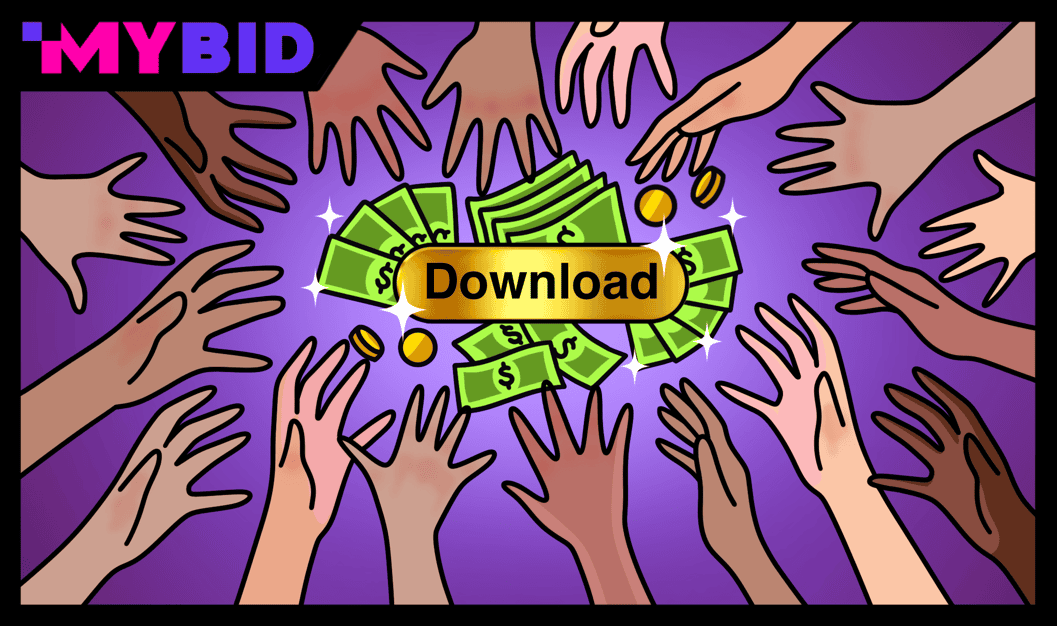
Incentivized traffic is a type of internet traffic where users are encouraged to perform certain actions through rewards. These rewards can come in various forms, such as bonus points, cash payments, or free gifts. In affiliate marketing, incentivized traffic is especially valuable as it helps quickly achieve key goals and attract attention to products or services.
Incentivized traffic has its own characteristics and requires a special approach. MyBid will help you understand the advantages and disadvantages of this type of traffic. Contact our manager to learn how to use incentivized traffic effectively. Let's achieve better results together!
Read also: Review how interstitial ads work and earn, Join an affiliate team without prior experience and Learn how to monetize apps in Huawei App Gallery.
Incentivized traffic is utilized in traffic arbitrage to achieve various marketing goals. It is particularly effective for quickly boosting metrics, such as the number of app installs or website registrations. Arbitrage experts use incentivized traffic in the following verticals:
1. Gambling (casinos, poker, lotteries)
2. Betting (sports betting, esports)
3. Apps (games, utilities)
4. E-commerce (online stores, marketplaces)
5. Educational platforms (online courses, webinars)
6. Financial services (banking apps, microloans)
7. Subscription services (music, video, magazines)
Using incentivized traffic often leads to the rapid achievement of marketing campaign goals and draws attention to new products and services.
Motivated traffic is used to achieve quick goals, as mentioned above. However, unlike traditional strategies, it cannot generate long-term profit for the advertiser. People who deposit a few dollars into a casino to beat it using a "scheme" from a Telegram channel or install an app to get real money do not convert into regular players or users.
Motivated traffic can be used for:
1. Boosting activity;
2. Improving an app's ranking in market listings;
3. Rapid earnings via CPA, with the same rapid and inevitable ban.
Regarding the last point, very few advertisers are willing to pay for leads that are not interested in their product and perform the targeted action just to receive a reward. Some unscrupulous arbitragers drive such traffic, receive payments, and then disappear.
Incentivized traffic has its pros and cons, which should be considered when launching ad campaigns.
Pros:
1. Rapid KPI Improvement: Helps quickly reach key performance indicators, such as the number of installs or registrations.
2. Increased Awareness: Quickly attracts attention to a product or service.
3. Improved App Store Rankings: Rapid increase in downloads can enhance app rankings.
Cons:
1. Low User Loyalty: Incentivized users are often less interested in the product and may stop using it quickly.
2. High Attrition Rate: After receiving the reward, users may discontinue using the app or service.
3. Risk of Rule Violations: Improper use of incentivized traffic can lead to sanctions from advertising platforms.
Paid traffic requires careful control and responsibility from both webmasters and advertisers. Misusing such traffic can lead to serious consequences.
1. Incentivized Traffic and Fraud: Incentivized traffic is often viewed as fraud. Advertisers may reject such leads, which, in the best-case scenario, leads to loss of rewards. In the worst-case scenario, it can result in the webmaster's account being blocked and termination of cooperation with the advertiser.
2. Criminal Liability for Scheme Traffic: In some cases, using scheme traffic can lead to criminal liability. There have been instances where entire arbitrage teams in Asia were detained at the request of Chinese authorities and received significant prison sentences for fraudulent activities. This underscores the importance of adhering to laws and regulations when working with incentivized traffic.
Using incentivized traffic requires understanding and accepting the responsibility for potential consequences. It's crucial to follow the terms of advertising platforms and legislation to avoid severe sanctions and issues.
There are several types of incentivized traffic, each with its unique features and applications depending on campaign goals.
1. CPI (Cost Per Install): Reward for app installs. This type of traffic is especially popular among mobile app developers as it allows for quickly increasing the number of installs and improving app store rankings.
2. CPA (Cost Per Action): Reward for performing a specific action, such as registering on a site, filling out a form, or subscribing to a newsletter. This type of traffic attracts more targeted users ready to engage with the product or service.
3. CPL (Cost Per Lead): Reward for generating potential clients (leads). This type of traffic is often used in B2B and B2C sectors for lead generation and subsequent interactions.
Incentivized traffic is an effective tool in traffic arbitrage and affiliate marketing, enabling the quick achievement of key performance indicators. However, potential risks must be considered, and the rules of advertising platforms must be followed to avoid possible issues. Proper use of incentivized traffic can significantly enhance the results of marketing campaigns and help achieve business goals.